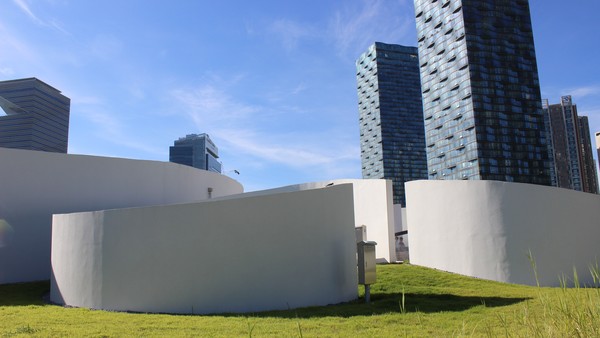Discovering the fascinating world of writing systems

NOT A day can go by without reading or writing. Language is an essential part of our lives and is one of the factors that establish a civilization. It enables effective communication and makes it possible to accumulate wisdom. The National Museum of World Writing Systems provides an enthralling voyage into the history of human language. As the third museum of writing systems in the world, it exhibits various artifacts—from Egyptian hieroglyphs to Korean Han-gul[1]. Opened on June 29, 2023, it is the first national museum in Incheon and is located in Songdo, not far from Yonsei’s International Campus.
Presenting the National Museum of World Writing Systems
The museum contains a permanent exhibition hall, a special exhibition hall, a children's exhibition hall, and an outdoor exhibition hall. Too Long, Didn’t Read―What Is the Future of Writing Systems? is on display at the special exhibition hall until November 19. There are four themes within the permanent exhibition which emphasize the contribution that writing has made to society and humanity[2].
The National Museum of Writing Systems showcases diverse artifacts and digital images, enabling us to speculate on the inventions that shaped initial writing systems. Within the collections are artifacts that display Egyptian hieroglyphs, Chinese characters, and cuneiform—the oldest documented script of mankind[1]. The museum illustrates that it was through the great invention of writing that culture and civilization could be cultivated. It also probes future implications of writing through its exhibition, Writing Systems of Tomorrow. With the explosive advancement of technology, the ways of communication along with the sharing and saving of information have been substantially altered[2].
Utilizing the concept of "resonation,” the museum's outdoor display presents visitors with a sensory-experiential installation. The deliberate interaction of carefully positioned elliptical panels creates an interplay of luminous fragments based on the angle of the sun within the sensory landscape. Adding to the abundant array of sensory stimuli, water particles fall through diagonal waterways and with subtle wavelengths. This exhibition establishes a forum for participation and discussion that encourages synesthesia through text[2].
* * *
The National Museum of Writing Systems encourages a greater understanding of the different methods by which humans have expressed themselves throughout history. The museum is a dedication to writing's profound influence on the history of humanity. Thus, it provides a meaningful opportunity to encounter and reflect on the boundless potential of the writing systems of the world.
[1] Yonhap News Agency
[2] National Museum of Writing Systems

